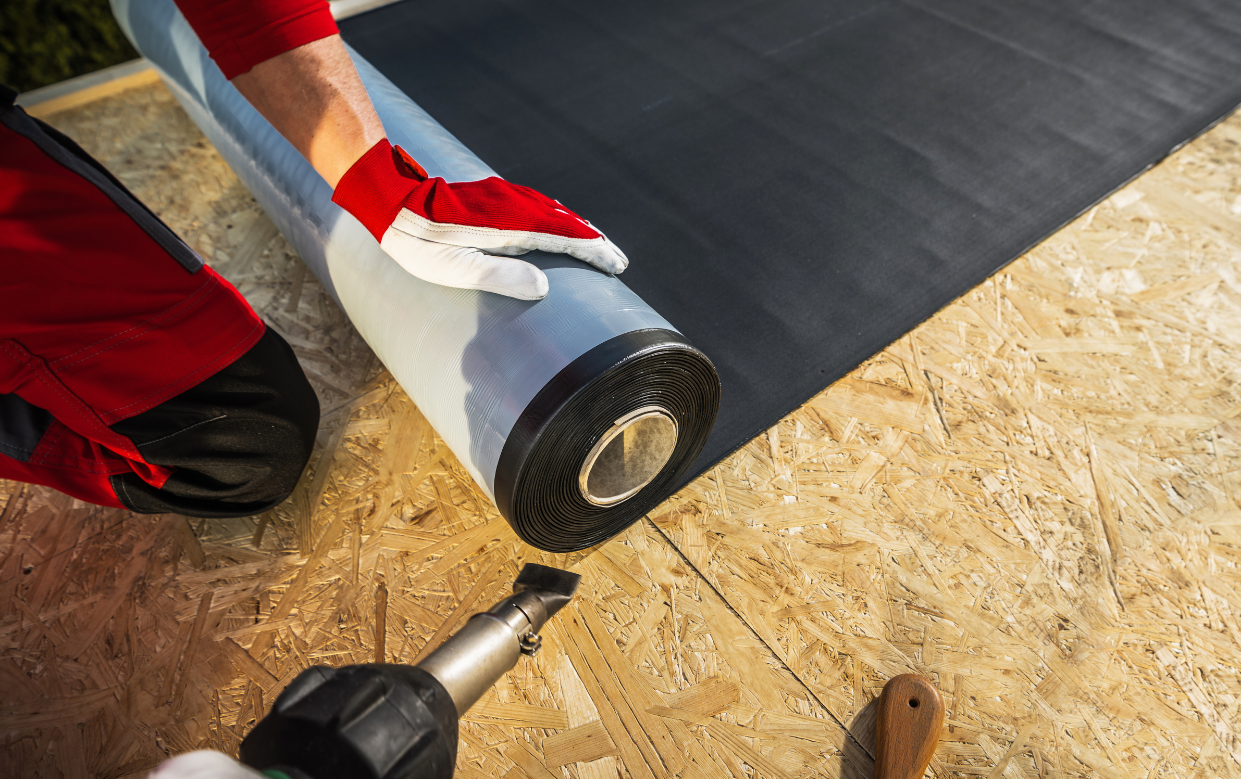Membrane Roofs
Membrane roofing uses strong, flexible sheets to create a seamless, leak-resistant roof.
Advantages Over Asphalt
Which is Right For You?
Synthetic Rubber (Thermoset)
This type of membrane roof is made of large, flat pieces of synthetic rubber or similar chemical family materials. These pieces are welded together at the seams to form one continuous membrane layer over your roofing deck. The finished roof’s thickness is usually between 30 and 60 mils (thousandths of an inch) (0.75 mm to 1.50 mm). Other types of related materials are CSPE, CR, and ECR.
Thermoplastic Membrane
This is also similar to synthetic rubber, but the seams do not form a continuous membrane. The ‘lap’ seams are bonded (melted or dissolved) with heat or solvents, and can be as strong as the rest of the membrane. Other related materials are CPA, CPE, EIP, NBP, PIB, and TPO.
Modified Bitumen
This type of roofing is an evolution of asphalt roofing. It is made from asphalt and a variety of modifiers and solvents. There are several ways of connecting pieces of this material. In a heat application process, the seams are heated to melt the asphalt together and create a seal. There is also a cold-applied adhesive application process, and some self-adhesive forms of this system. This material is also referred to as APP or SBS.
7x7 Roofing
2443 Fillmore St #380-6351
San Francisco, CA 94115
(415) 535-8170
erik@7x7roofing.com
We do not offer free inspections. learn why





